Trivia Browser
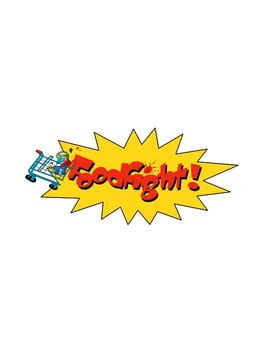
▲
1
▼
 Concept art for the 2001 build of the cancelled Foodfight! game developed by Midway Games West was released on artist Jason Leong's website, showing a set of character concepts and game scenarios with various fictional and real-life product mascots. The character concepts shown include:
Concept art for the 2001 build of the cancelled Foodfight! game developed by Midway Games West was released on artist Jason Leong's website, showing a set of character concepts and game scenarios with various fictional and real-life product mascots. The character concepts shown include:• The red, yellow, and blue M&M's carrying vitamin supplement boxes with muscular hammer-wielding arms coming out of them.
• The Keebler Elves firing bows and arrows with flaming Tootsie Pops.
• A team-up of the Green Giant, a muscular version of Poppin' Fresh the Pillsbury Doughboy, and a jacket-wearing Kool-Aid Man.
• Mr. Clean commanding an army of Scrubbing Bubbles.
• Cap'n Crunch shooting a bazooka made out of a Pringles can.
• Hawaiian Punch's mascot Punchy punching a soup can made by Brand X, a fictional brand from the movie.
The game scenarios seem to feature various mini-games among main game missions, including:
• An early human version of Dex Dogtective swinging with a grappling hook, finding shortcuts between products, being launched from Hamburger Helper's mascot Lefty in platforming sections.
• What appears to be a mini-game where Dex and a Brand X mascot would bump into one another on shopping trolleys.
• A mission where fictional mascot Daredevil Dan flies above the supermarket in his plane.
• The Green Giant rolling over tiny Brand X bots with either a barrel or a mango bowling ball. This mini-game has two pieces of concept art, one that presents it as akin to the game Tempest and another that shows the Green Giant stepping on robots.
• Dex commanding the M&M's in a shooting mini-game.
• A platforming mini-game with Cap'n Crunch jumping off of barrels.
• A mini-game where fictional mascot Polar Penguin must destroy pillars on the ice.
• A cow-herding mini-game featuring Twinkie the Kid.
• A food-fighting mini-game, like the climax of the movie, specifically themed around Chef Boyardee.
• A mini-game where Dex throws Lucky Charms at Brand X drones.
Of the licensed characters featured in this concept art, only Mr. Clean, Punchy, Chef Boyardee, and Twinkie the Kid would appear in the film when it eventually released in 2012.

▲
2
▼
Just before Sonic transforms into Super Sonic near the end of the game, the surviving crowd in Station Square can be heard in the background chanting Sonic's name to encourage him. This crowd recording is actually comprised of over one thousand attendants in the audience for the official reveal of the game at the Tokyo International Forum on August 22, 1998. The chant was led by special guest Hiroshi Fujioka portraying Segata Sanshiro, the Japanese advertising mascot for the Sega Dreamcast's predecessor the Sega Saturn, and recorded by Sega to use in the game.
Sonic Adventure reveal at the Tokyo International Forum on August 22, 1998:
https://www.youtube.com/watch?v=LwzRMCNu6Rc?t=3357
Final chant recording at the event used in the game:
https://www.youtube.com/watch?v=LwzRMCNu6Rc?t=3643
Sonic Adventure - Super Sonic transformation chant:
https://www.youtube.com/watch?v=Nv9wXt81xDw?t=917
SonicRetro article:
https://sonicretro.org/2023/08/23/25-years-ago-sonic-adventure-was-revealed-to-the-world-a-look-back/
https://www.youtube.com/watch?v=LwzRMCNu6Rc?t=3357
Final chant recording at the event used in the game:
https://www.youtube.com/watch?v=LwzRMCNu6Rc?t=3643
Sonic Adventure - Super Sonic transformation chant:
https://www.youtube.com/watch?v=Nv9wXt81xDw?t=917
SonicRetro article:
https://sonicretro.org/2023/08/23/25-years-ago-sonic-adventure-was-revealed-to-the-world-a-look-back/
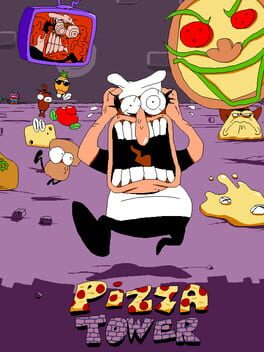
▲
2
▼
The Noise was designed to be an obvious parody of the 1980s Domino's Pizza claymation anti-mascot "The Noid". The game's developer McPig has claimed that if The Noise wasn't based on The Noid, the boss would've had a parody of Vocaloid Hatsune Miku instead, in reference to Domino's App feat. Hatsune Miku, an app that became a niche YouTube Poop meme in the early 2010s.
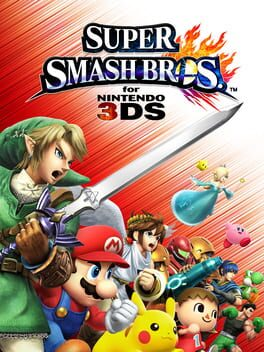
subdirectory_arrow_right Super Smash Bros. for Wii U (Game)
▲
2
▼
As an early April Fools' joke, the fan-run Facebook/Blogspot group Operation: Power Up made a fake Super Smash Bros. website character page based on the ones used in the official website to "reveal" Nester, the mascot of Nintendo Power magazine, as a playable character. While the page itself is notably accurate to the source material, the screenshots shown at the bottom are of very low quality: not only is Nester's model poorly made, he's only ever shown alone in the pics and is clearly pasted on in some of them.
April Fools joke:
https://web.archive.org/web/20140330214132/https://www.smashbros.us/us/characters/nester.html
Archived smashbros.us page linking to Operation: Power Up's Blogspot page:
https://web.archive.org/web/20160110171420/http://smashbros.us/
Article about the joke:
https://www.destructoid.com/site-tries-to-reveal-nester-for-smash-bros-nobody-falls-for-it/
https://web.archive.org/web/20140330214132/https://www.smashbros.us/us/characters/nester.html
Archived smashbros.us page linking to Operation: Power Up's Blogspot page:
https://web.archive.org/web/20160110171420/http://smashbros.us/
Article about the joke:
https://www.destructoid.com/site-tries-to-reveal-nester-for-smash-bros-nobody-falls-for-it/

▲
1
▼
Prior to the creation of Bubsy, Accolade tried to encourage Michael Berlyn to use Cheetos mascot Chester Cheetah instead of creating a new character for the game, but Berlyn convinced them by pointing out how creating a new character would be cheaper than licensing out an established mascot.
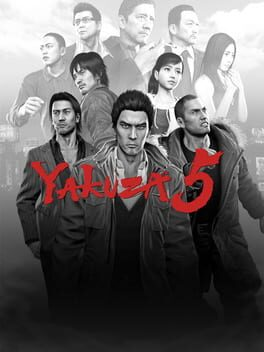
▲
1
▼
The Tsukimono area in Yakuza 5 features an ice sculpture of Hatsune Miku, a virtual idol likeness owned by Crypton Future Media and licensed out to Sega for video game appearences. Although this might be coincidental rather than an intentional reference, Crypton is located in Sapporo, the same city as Tsukimono.
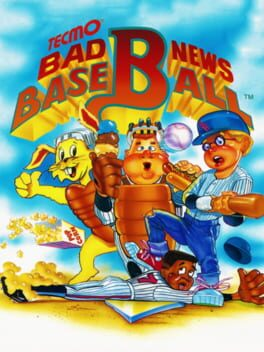
▲
1
▼
 In the 1980s, Tecmo had a short-lived bunny rabbit mascot who would appear standing next to the Tecmo logo in credits sequences and title screens, as well as a rare power-up in Solomon's Key and Mighty Bomb Jack. Bad News Baseball is the only known game where he makes a physical appearance, as the umpire.
In the 1980s, Tecmo had a short-lived bunny rabbit mascot who would appear standing next to the Tecmo logo in credits sequences and title screens, as well as a rare power-up in Solomon's Key and Mighty Bomb Jack. Bad News Baseball is the only known game where he makes a physical appearance, as the umpire.
Examples of Bunny use:
https://www.youtube.com/watch?v=eFwqTePDQXQ#t=2515
https://twitter.com/JohnAndersen21/status/673262816003010560
https://www.youtube.com/watch?v=iEf6uHP4BH0#t=3
Solomon's Key/Mighty Bomb Jack:
https://www.youtube.com/watch?v=kDtSgZNNYns#t=105
Bunny as the umpire in Bad News Baseball:
https://www.youtube.com/watch?v=6UU_pw_jhOo#t=2634
https://www.youtube.com/watch?v=eFwqTePDQXQ#t=2515
https://twitter.com/JohnAndersen21/status/673262816003010560
https://www.youtube.com/watch?v=iEf6uHP4BH0#t=3
Solomon's Key/Mighty Bomb Jack:
https://www.youtube.com/watch?v=kDtSgZNNYns#t=105
Bunny as the umpire in Bad News Baseball:
https://www.youtube.com/watch?v=6UU_pw_jhOo#t=2634
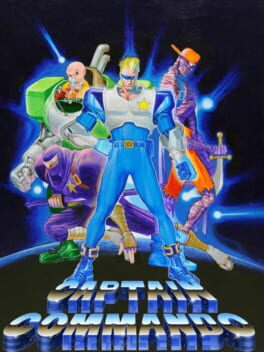
▲
1
▼
 It is often said that Mega Man was once used as Capcom's mascot in the 1980s, in a similar way to how Nintendo and Sega use Mario and Sonic respectively. Like many other statements of platforming characters being used as corporate mascots, this is untrue, as Mega Man has never been used to promote the wider Capcom brand of software outside of his own games or crossovers in which he appears. However, Capcom did have a mascot in the 1980s: the titular hero of Captain Commando - many earlier NES Capcom games were branded as part of the "Captain Commando Challenge Series", including licensed titles such as DuckTales, with game manuals having signed messages "written" by Captain Commando. Despite this, Captain Commando was never released on the NES.
It is often said that Mega Man was once used as Capcom's mascot in the 1980s, in a similar way to how Nintendo and Sega use Mario and Sonic respectively. Like many other statements of platforming characters being used as corporate mascots, this is untrue, as Mega Man has never been used to promote the wider Capcom brand of software outside of his own games or crossovers in which he appears. However, Capcom did have a mascot in the 1980s: the titular hero of Captain Commando - many earlier NES Capcom games were branded as part of the "Captain Commando Challenge Series", including licensed titles such as DuckTales, with game manuals having signed messages "written" by Captain Commando. Despite this, Captain Commando was never released on the NES.Capcom's former community manager Seth Killian addressed Capcom's current lack of a mascot and Mega Man's use as an unofficial mascot on the Capcom-Unity forums in 2009:
"...we don't have an "official" mascot. We have a logo, that’s it.
As far as unofficial mascots go, however, yes, MM would definitely be that. I have actually heard someone discuss this, and I think the reasoning was something akin to Mega Man best embodying the spirit of the company.
So apparently in addition to making great games, Capcom is also here to save the planet from overthrow by evil robot masters (and according to recorded history so far, I'd say we're doing pretty well–2009 and still no overthrows)."
As far as unofficial mascots go, however, yes, MM would definitely be that. I have actually heard someone discuss this, and I think the reasoning was something akin to Mega Man best embodying the spirit of the company.
So apparently in addition to making great games, Capcom is also here to save the planet from overthrow by evil robot masters (and according to recorded history so far, I'd say we're doing pretty well–2009 and still no overthrows)."
Example of a Challenge Series manual:
https://www.thegameisafootarcade.com/wp-content/uploads/2017/02/Duck-Tales-Game-Manual.pdf
Example of a Challenge Series box:
https://imgur.com/AktT0EB
Seth Killian on Capcom's mascot:
https://nintendoeverything.com/?p=22493
https://www.thegameisafootarcade.com/wp-content/uploads/2017/02/Duck-Tales-Game-Manual.pdf
Example of a Challenge Series box:
https://imgur.com/AktT0EB
Seth Killian on Capcom's mascot:
https://nintendoeverything.com/?p=22493

subdirectory_arrow_right Pokémon (Franchise)
▲
4
▼
 Early in the Pokémon franchise's life, the Poliwhirl line recieved a major push in marketing, comparable to that of series mascot Pikachu.
Early in the Pokémon franchise's life, the Poliwhirl line recieved a major push in marketing, comparable to that of series mascot Pikachu. Mascot costumes were made of Poliwhirl for promotional events, the Pokémon Adventures manga featured Poliwhirl as one of Red's Pokémon, Poliwag was placed closely to Pikachu on the box art of Pokémon Snap, food and toy lines would near-consistently feature a member of the Poliwhirl line alongside Pikachu even when the pool of Pokémon was as limited as 3 or 4 (with exceptions primarily being ones that also lacked Pikachu), and, most famously, Poliwhirl appeared on the center of the cover of TIME Magazine's issue adressing the popularity of Pokémon.
This could be related to Poliwag being Pokémon creator Satoshi Tajiri's favourite of the original 151 Kanto species.
Comedic video about bizarre Pokémon merchandise showing off many instances of Poliwhirl and Poliwrath merchandise - the nature of Poliwhirl's "mascot" status is discussed at the 13:06 mark:
https://youtu.be/Gri7-XW3no8
ResetEra thread about Poliwhirl that opens with multiple images of Poliwhirl memorabilia:
https://www.resetera.com/threads/pokemons-bygone-mascot.763622/
Video from a Kellogg's fan channel featuring box scans and commercials for Pokémon cereal with Poliwhirl:
https://youtu.be/4kEnxp0ihPI
Pop Tarts commercial featuring Poliwrath toys:
https://youtu.be/oKw6l1Skglc
Kraft Mac & Cheese advert featuring Poliwhirl:
https://youtu.be/Sj5lfgEz_bU
Video featuring a photo of a Poliwhirl mascot:
https://youtu.be/KR5oKvYi_PQ
KFC and Heinz commercials for promotions featuring neither, Poliwhirl nor Pikachu:
https://youtu.be/9HCDPTQGmrI
https://youtu.be/nNc1xl8uoMA
Tajiri talks Poliwag:
https://youtu.be/gplIo-J9Ttc?si=vXRHECazu6kGu4IQ&;t=433
https://youtu.be/Gri7-XW3no8
ResetEra thread about Poliwhirl that opens with multiple images of Poliwhirl memorabilia:
https://www.resetera.com/threads/pokemons-bygone-mascot.763622/
Video from a Kellogg's fan channel featuring box scans and commercials for Pokémon cereal with Poliwhirl:
https://youtu.be/4kEnxp0ihPI
Pop Tarts commercial featuring Poliwrath toys:
https://youtu.be/oKw6l1Skglc
Kraft Mac & Cheese advert featuring Poliwhirl:
https://youtu.be/Sj5lfgEz_bU
Video featuring a photo of a Poliwhirl mascot:
https://youtu.be/KR5oKvYi_PQ
KFC and Heinz commercials for promotions featuring neither, Poliwhirl nor Pikachu:
https://youtu.be/9HCDPTQGmrI
https://youtu.be/nNc1xl8uoMA
Tajiri talks Poliwag:
https://youtu.be/gplIo-J9Ttc?si=vXRHECazu6kGu4IQ&;t=433
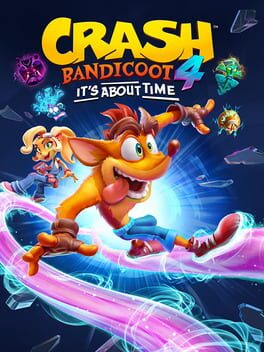
▲
2
▼
In the Flashback Tape "The Gauntlet", Cortex will say "Maybe next time I'll try a hedgehog…or a bobcat…or a gecko". These are references to Sonic the Hedgehog, Bubsy the Bobcat, and Gex the Gecko, all of which were wisecracking anthropomorphic characters from 1990s platformers, much like Crash.
Franchise: Pokémon
▲
3
▼
 According to Tsunekazu Ishihara, the president of The Pokémon Company, Nintendo of America didn’t like the original Japanese designs for Pokémon as they thought they looked “too cute”, so they made their own redesigns.
According to Tsunekazu Ishihara, the president of The Pokémon Company, Nintendo of America didn’t like the original Japanese designs for Pokémon as they thought they looked “too cute”, so they made their own redesigns.In particular, Pikachu was apparently redesigned to resemble a tiger with big breasts. When Ishihara asked how it was meant to be Pikachu, the American designers responded that because it has Pikachu’s tail, then that makes it Pikachu.
Franchise: Pokémon
▲
1
▼
Although referred to as an electric mouse, Pikachu's design is actually based on a squirrel. According to former Game Freak designer Atsuko Nishida, she was fond of squirrels at the time of Red & Green's development, so she based Pikachu on squirrels. From its red cheeks used to store electricity based on squirrels storing food in its cheeks, to its lightning bolt-shaped tail more closely resembling a bushy squirrel tail rather than the tail of a mouse.
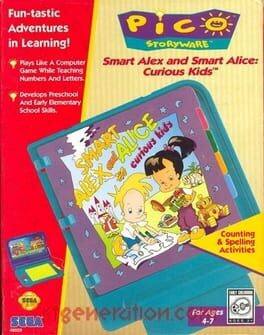
subdirectory_arrow_right Sega Pico (Platform)
▲
2
▼
 The Sega Pico has a variety of different mascots depending on territory:
The Sega Pico has a variety of different mascots depending on territory:• In Japan, the Sega Pico had a set of two mascots, who were originally hand-drawn, but changed to a CGI style upon the hardware's rebranding to the "Kids Communication Pico". These characters would appear in the opening titles for every Japanese Pico release and are not known to have appeared in any commercials.
• In Western territories, the Sega Pico used a mascot known as "Smart Alex", originating from the game Smart Alex & Smart Alice: Curious Kids. Box arts for Pico games in regions such as the UK and France would feature Smart Alex regardless of if he actually appeared in the game, he appeared in animated commercials for the hardware, and he had a mascot costume made for the 1995 Macy's Thanksgiving Day Parade. Smart Alex is the only Pico mascot to have appeared in his own game.
• In Korea, where the hardware was distributed by Samsung, it used a star-shaped animal character. The character would continue to be used for the Samsung Thinko, a Pico successor made without Sega's involvement, independent of its Japanese follow-up, the Advanced Pico Beena.
Smart Alex at Macy's:
https://youtu.be/QhXBi-o0xVQ?si=ikEcsnaU_Xqzfz5-&;t=5874
Smart Alex commercial:
https://youtu.be/ArVuY33S0jg?si=9GGgc2F-xyrK6VDq
UK and French box art scans:
https://segaretro.org/Category:Pico_UK_box_scans
https://segaretro.org/Category:Pico_FR_box_scans
Korean Pico commercial:
https://youtu.be/ag58ZZ04hxA?si=DLZC-msz74WL8Ydd
Thinko commercial with Korean Pico mascot:
https://youtu.be/hd7jZVTaH-w?si=yW38ZkgF1RhRFQm8
Early JP Pico logo:
https://youtu.be/b7cqWyhezTM?si=X6bheyl5C5zuOfJT
Later JP Pico logo:
https://youtu.be/9jc3Xn2WGrI?si=QC-fmzVODJuBZ6vs
https://youtu.be/QhXBi-o0xVQ?si=ikEcsnaU_Xqzfz5-&;t=5874
Smart Alex commercial:
https://youtu.be/ArVuY33S0jg?si=9GGgc2F-xyrK6VDq
UK and French box art scans:
https://segaretro.org/Category:Pico_UK_box_scans
https://segaretro.org/Category:Pico_FR_box_scans
Korean Pico commercial:
https://youtu.be/ag58ZZ04hxA?si=DLZC-msz74WL8Ydd
Thinko commercial with Korean Pico mascot:
https://youtu.be/hd7jZVTaH-w?si=yW38ZkgF1RhRFQm8
Early JP Pico logo:
https://youtu.be/b7cqWyhezTM?si=X6bheyl5C5zuOfJT
Later JP Pico logo:
https://youtu.be/9jc3Xn2WGrI?si=QC-fmzVODJuBZ6vs
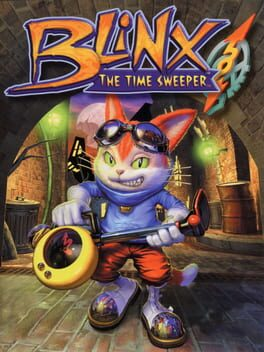
▲
3
▼
Despite being positioned as the Xbox's mascot by the gaming press, Blinx the Time Sweeper was not created to fill that role or rival the likes of Mario and Sonic. Despite an internal push from the Blinx team for the character to become the platform's mascot in Japan (of which executive producer Ed Fries claims to be "not sure how seriously [the Blinx team] took it"), as well as the desire of Bill Gates for Microsoft's gaming department to have a mascot, the character was not officially used as an Xbox mascot. The game did still get a major marketing push in Japan thanks to convenient timing during a Christmas dry spell of game releases and being a Japanese game.